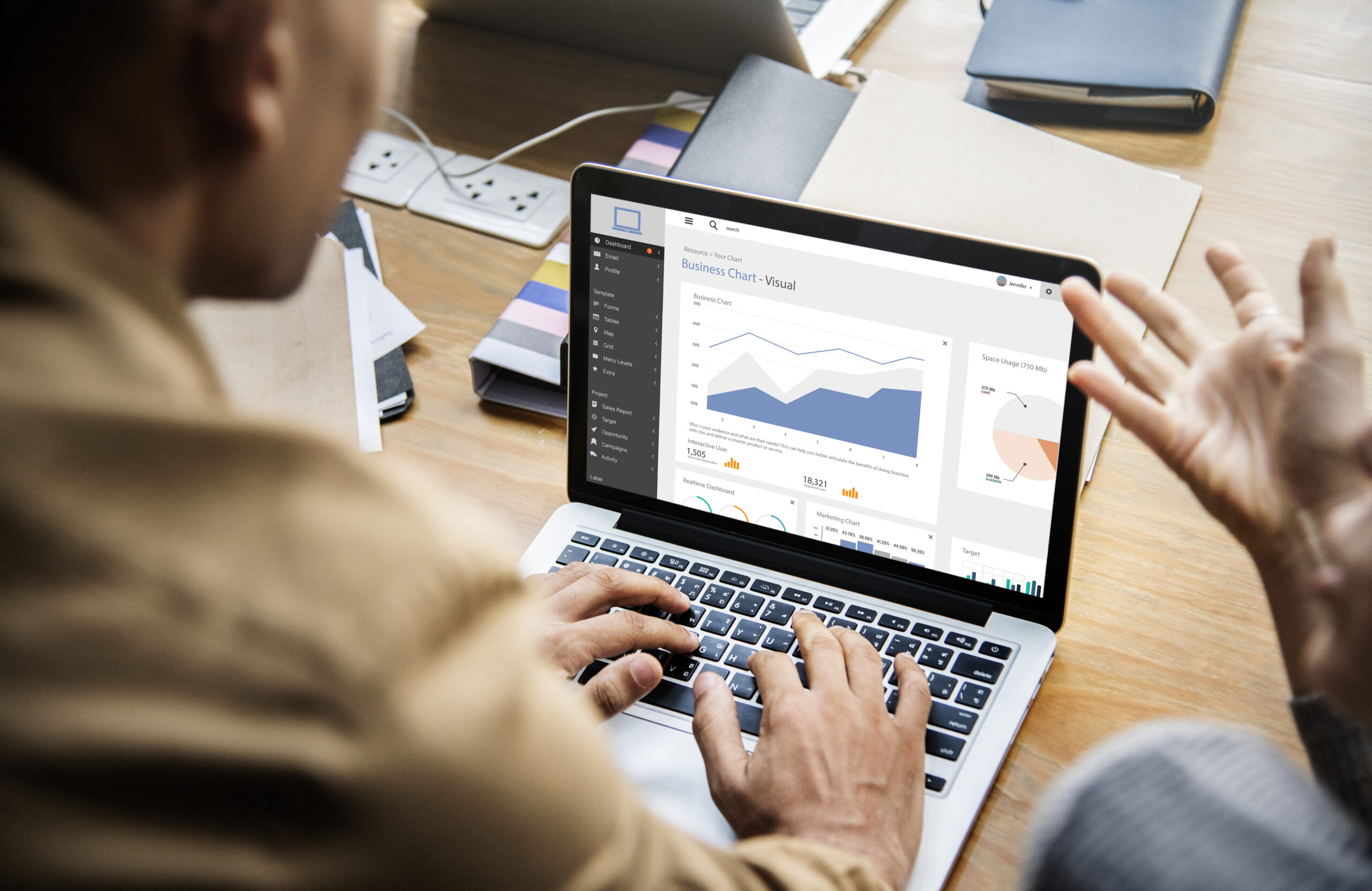Gain valuable insights into your SEO performance with SEO KPIs. Make data-driven decisions to optimize your strategy. KPIs, or key performance indicators, are the metrics that tell you whether your SEO strategy is moving in the right direction. But with so many numbers flying around, it’s easy to lose focus.
At Timpson Marketing, we help businesses across Chicago cut through the noise. We track the most relevant SEO KPIs to measure performance and drive better results. In 2025, SEO is more competitive than ever. You can’t afford to guess. You need to track the right data—and we’re going to show you exactly what that is.
What Are SEO KPIs and Why Do They Matter?
SEO KPIs are measurable values that help determine how your website is performing in organic search. They show you what’s working, what’s not, and where you need to make adjustments. Whether you’re running an eCommerce store in Arizona or a local service business in Tennessee, tracking SEO KPIs is critical. Without them, you’re flying blind. With them, you’re making informed, strategic decisions.
Top SEO KPIs to Track in 2025
Some SEO KPIs never go out of style, but 2025 brings a few new twists. Let’s explore the metrics that matter most.
1. Organic Traffic
Organic traffic tells you how many visitors find your site through unpaid search results. It’s a strong indicator of how well your SEO strategy is performing. Use tools like Google Search Console and Google Analytics 4 to break this down by page, device, and location.
2. Keyword Rankings
Where your site appears on Google matters. Tracking keyword rankings helps you see how your content stacks up for your target terms. Keep an eye on local keyword performance too, especially if you’re competing in markets like Boise, Meridian, or Pocatello.
3. Click-Through Rate (CTR)
CTR measures the percentage of people who click on your search listing after seeing it. A high CTR means your titles and descriptions are doing their job. If your ranking is high but clicks are low, you may need to rewrite your meta tags.
4. Bounce Rate
Bounce rate tells you how many users leave your site after viewing just one page. A high bounce rate may signal that your content isn’t matching user intent. Fixing this can boost both rankings and conversions.
5. Average Time on Page
This metric shows how long visitors stay on your content. More time usually means more engagement. In-depth blog posts, videos, and internal links can help increase this KPI.
6. Conversion Rate
It’s not just about traffic. It’s about what that traffic does. Are visitors filling out forms, calling your business, or making purchases? Track organic conversion rates specifically, not just sitewide conversions.
7. Backlinks
Backlinks from reputable sites still matter in 2025. They boost your authority and help you rank higher. Use tools like Ahrefs or Semrush to monitor new and lost links.
8. Core Web Vitals
Google made speed and user experience a ranking factor. Core Web Vitals measure page loading, interactivity, and visual stability. Improve these with better hosting, optimized images, and clean code.
9. Index Coverage
Check how many of your pages are indexed by Google. If key pages aren’t indexed, they won’t appear in search results. Fix this using sitemaps and by removing crawl blocks.
10. Local Pack Rankings
If you’re a local business, appearing in Google’s 3-Pack is gold. Track how often your business shows up for “near me” and geo-targeted terms. Use local SEO tools like BrightLocal or Whitespark.
Measuring SEO KPIs With the Right Tools
You can’t track KPIs without reliable data. Here’s a short list of tools every business should use.
- Google Analytics 4
- Google Search Console
- Ahrefs or Semrush
- Google Business Profile Insights
- Hotjar or Crazy Egg for behavior mapping
Pairing these tools gives you a 360-degree view of your SEO performance.
Client Experience from Timpson Marketing
“We were spending significant resources on SEO, but lacked the visibility to understand what was working. Timpson Marketing’s custom SEO dashboard provided the missing piece. It gave us a clear picture of which pages were generating leads, allowing us to allocate our budget more effectively and focus our efforts on high-performing areas. We’ve seen a significant increase in lead generation since implementing their dashboard. We used to guess, now we make decisions based on data, and the results speak for themselves.”
— Kleah G., Marketing Director, Nashville, TN
How Often Should You Check Your SEO KPIs?
Don’t check every metric every day. That’s overwhelming and not helpful.
Instead:
- Review core KPIs weekly or bi-weekly
- Do deep dives monthly or quarterly
- Adjust strategy based on trends, not daily spikes
Consistency is key. Data without context leads to bad decisions.
How Timpson Marketing Tracks and Improves Your SEO KPIs
We don’t just give you numbers. We help you understand what they mean and how to act on them. Our team creates easy-to-read reports and custom dashboards so you can track progress month to month. We focus on the metrics that matter to your bottom line, so you’re not wasting time chasing vanity stats. Whether your target audience is in Texas, Florida, or anywhere in between, our KPI strategies are flexible and adaptable to your specific needs and goals. Contact us to discuss your needs.
Frequently Asked Questions
1. What are SEO KPIs?
SEO KPIs are metrics that measure how well your SEO strategy performs. They help you track traffic, engagement, and conversions. Knowing them guides smarter decisions.
2. Why is organic traffic a key metric?
Organic traffic shows how many users visit your site through search engines. It’s a strong indicator of SEO performance. More organic traffic usually means better rankings.
3. How do I track keyword rankings?
You can use tools like Ahrefs, Semrush, or Google Search Console. They show where your site ranks for specific keywords. Track changes weekly or monthly.
4. What is a good bounce rate?
A bounce rate under 50% is generally considered good. It means users are engaging with more than one page. High bounce rates may signal content mismatch.
5. What does click-through rate (CTR) tell me?
CTR shows how many users clicked on your link in search results. A low CTR may mean your title or meta description needs improvement. High CTR boosts rankings over time.
6. Should I worry about time on page?
Yes. Longer time on page means users are interested in your content. It can improve your engagement score and help rankings.
7. How are conversions linked to SEO?
Conversions show whether your traffic is doing what you want. This includes form fills, calls, or purchases. SEO should drive qualified traffic that converts.
8. What tools help monitor backlinks?
Ahrefs, Moz, and Semrush are great for backlink tracking. They show new links and lost links. Use this to guide your link-building strategy.
9. What are Core Web Vitals?
Core Web Vitals measure site speed and user experience. Metrics include Largest Contentful Paint (LCP) and Cumulative Layout Shift (CLS). Better scores lead to higher rankings.
10. Why is index coverage important?
If your pages aren’t indexed, they can’t show up on Google. Use Search Console to see what’s indexed. Submit missing pages using XML sitemaps.
11. What is the Google Local Pack?
It’s the map section that shows top local business listings. Ranking here drives phone calls and visits. It’s vital for local SEO.
12. How do I improve my CTR?
Write better meta titles and descriptions. Use power words and clear value propositions. A/B testing can also help improve CTR.
13. What’s the difference between impressions and clicks?
Impressions show how often your link appears. Clicks show how many people visit your site. Both help analyze visibility and engagement.
14. Should small businesses track SEO KPIs?
Yes. Small businesses need SEO data to grow. Tracking helps them compete with larger brands by focusing on what works.
15. How can I tell if my SEO is improving?
Look for upward trends in traffic, keyword rankings, and conversions. Monthly reports help reveal patterns. Compare performance to previous periods.
16. Do images affect SEO KPIs?
They can. Optimized images improve site speed and engagement. Include alt tags to help with accessibility and rankings.
17. What’s a vanity metric in SEO?
Vanity metrics look good but don’t show real value. Examples include total page views without conversions. Focus on KPIs tied to business outcomes.
18. Can I automate SEO reports?
Yes. Tools like Looker Studio, Ahrefs, and Semrush offer report automation. Timpson Marketing builds custom dashboards for clients. This saves time and boosts clarity.
19. Are monthly SEO reports enough?
Yes, in most cases. Monthly reports show trends and help guide strategy. Weekly updates can be useful for high-traffic sites.
20. How do local keywords affect KPIs?
Local keywords help target users in specific regions. Tracking them shows how well you rank in places like Boise or Nampa. Local SEO boosts calls and foot traffic.




Leave A Comment